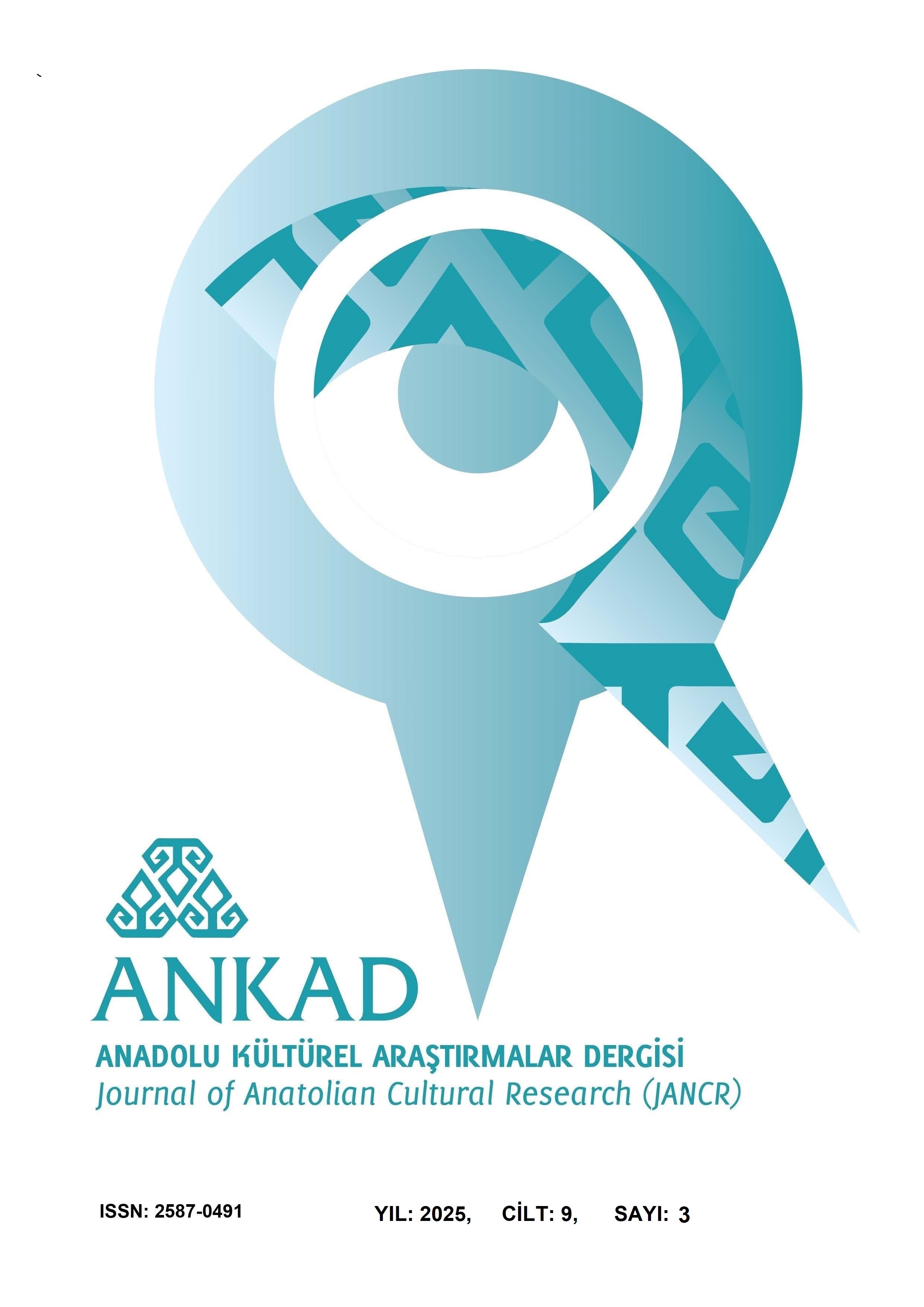The Effects of Air Transportation and Exports on Economic Growth in Türkiye
DOI:
https://doi.org/10.63556/ankad.v9i3.246Keywords:
Economic growth, Air transportation, Vector Error Correction Model (VECM), ExportAbstract
Analyzing the effects of air transportation and exports on economic growth is critically important for the development of economic policies in developing countries such as Türkiye. This study aims to investigate the impact of air transportation and exports on economic growth in Türkiye. Using annual data from 1987 to 2021, the analysis employs a Vector Error Correction Model (VECM) to reveal the dynamic relationships among the variables. By separately examining the interactions between air transportation, exports, and economic growth, the study seeks to elucidate the contributions of these two factors to economic growth. The findings indicate that, in the long run, air transportation has no statistically significant effect on economic growth, whereas the export of goods and services has a positive influence on economic growth. In the short run, the results show that air transportation has a negative effect on economic growth. Additionally, it is found that the first and second lagged values of economic growth have a positive impact on current growth, while the second lagged value of air transportation is negative and significant. The lagged values of exports, both first and second, have no significant effect on economic growth in the short run. Based on these findings, it is suggested that, to support Türkiye’s economic growth, exports should be promoted and air transportation should be better aligned with the country’s economic dynamics.
References
Adedoyin, F. F., Bekun, F. V., Driha, O. M. & Balsalobre-Lorente, D. (2020). The effects of air transportation, energy, ICT and FDI on economic growth in the industry 4.0 era: Evidence from the United States. Technological Forecasting and Social Change, 160, 120297.
Al Mamun, K. A. & Nath, H. K. (2005). Export-led growth in Bangladesh: a time series analysis. Applied Economics Letters, 12(6), 361-364.
Ali, R., Bakhsh, K. & Yasin, M. A. (2023). Causal nexus between air transportation and economic growth in BRICS countries. Journal of Air Transport Management, 107, 102335.
Altuntaş, M. & Kılıç, E. (2021). Havayolu taşımacılığı ile ekonomik büyüme arasındaki ilişkinin incelenmesi: Türkiye örneği. Afyon Kocatepe Üniversitesi Sosyal Bilimler Dergisi, 23(1), 187-202.
Baker, D., Merkert, R. & Kamruzzaman, M. (2015). Regional aviation and economic growth: cointegration and causality analysis in Australia. Journal of Transport geography, 43, 140-150.
Bilgin, C. & Sahbaz, A. (2009). Türkiye’de büyüme ve ihracat arasındaki nedensellik ilişkileri. Gaziantep Üniversitesi Sosyal Bilimler Dergisi, 8(1), 177-198.
Brida, G., Lanzilotta, B., Brindis, M. & Rodríguez, S. (2014). Long-run relationship between economic growth and passenger air transport in Mexico. Serie DT, 14(4), 1-15.
Button, K. & Yuan, J. (2013). Airfreight transport and economic development: an examination of causality. Urban studies, 50(2), 329-340.
Chandra Parida, P. & Sahoo, P. (2007). Export-led growth in South Asia: a panel cointegration analysis. International Economic Journal, 21(2), 155-175.
Chang, Y.-H. & Chang, Y.-W. (2009). Air cargo expansion and economic growth: Finding the empirical link. Journal of Air Transport Management, 15(5), 264-265.
Czerny, A. I., Fu, X., Lei, Z. & Oum, T. H. (2021). Post pandemic aviation market recovery: Experience and lessons from China. Journal of Air Transport Management, 90, 101971.
Dickey, D. A. & Fuller, W. A. (1979). Distribution of the estimators for autoregressive time series with a unit root. Journal of the American statistical association, 74(366a), 427-431.
Dickey, D. A. & Fuller, W. A. (1981). Likelihood ratio statistics for autoregressive time series with a unit root. Econometrica: journal of the Econometric Society, 1057-1072.
Dünya Bankası. (2024). Dünya Kalkınma Göstergeleri. https://databank.worldbank.org/source/world-development-indicators , E.T.: 01 Kasım 2024.
Elbeydi, K. R., Hamuda, A. M. & Gazda, V. (2010). The relationship between export and economic growth in Libya Arab Jamahiriya. Theoretical and Applied economics, 1(1), 69.
Eryer, A. (2024). Havayolu taşımacılığının ekonomik büyüme üzerine etkisi: Kırılgan Beşli Örneği. Equinox Journal of Economics Business and Political Studies, 11(1), 24-37.
Fernandes, E. & Pacheco, R. R. (2010). The causal relationship between GDP and domestic air passenger traffic in Brazil. Transportation Planning and Technology, 33(7), 569-581.
Genç, M. C., Değer, M. K. & Berber, M. (2010). Beşeri sermaye, ihracat ve ekonomik büyüme: Türkiye ekonomisi üzerine nedensellik analizi. Bilgi Ekonomisi ve Yönetimi Dergisi, 5(1), 29-41.
Gudmundsson, S. V., Cattaneo, M. & Redondi, R. (2021). Forecasting temporal world recovery in air transport markets in the presence of large economic shocks: The case of COVID-19. Journal of Air Transport Management, 91, 102007.
Gümüş Akar, P., Manga, M. & Bal, H. (2019). Havayolu taşımacılığında liberalizasyon ve ekonomik büyüme arasında nedensellik ilişkisi: Türkiye örneği. Gaziantep University Journal of Social Sciences, 18(3), 1160-1174.
Hakim, M. M. & Merkert, R. (2016). The causal relationship between air transport and economic growth: Empirical evidence from South Asia. Journal of Transport geography, 56, 120-127.
Higgoda, R. & Madurapperuma, W. (2020). Air passenger movements and economic growth in Sri Lanka: Co-integration and causality analysis. Journal of Transport and Supply Chain Management, 14(1), 1-13.
Hu, Y., Xiao, J., Deng, Y., Xiao, Y. & Wang, S. (2015). Domestic air passenger traffic and economic growth in China: Evidence from heterogeneous panel models. Journal of Air Transport Management, 42, 95-100.
Iqbal, A., Tang, X. & Rasool, S. F. (2023). Investigating the nexus between CO2 emissions, renewable energy consumption, FDI, exports and economic growth: evidence from BRICS countries. Environment, Development and Sustainability, 25(3), 2234-2263.
İslamoğlu, B. (2022). Türkiye’de havayolu taşımacılığı ile ekonomik büyüme arasındaki ilişkinin yapısal kırılmalı ekonometrik yöntem yaklaşımıyla incelenmesi. Uluslararası İşletme, Ekonomi ve Yönetim Perspektifleri Dergisi, 5(2), 749-759.
Kasarda, J. D. & Green, J. D. (2005). Air cargo as an economic development engine: A note on opportunities and constraints. Journal of Air Transport Management, 11(6), 459-462.
Kılavuz, E. & Altay Topcu, B. (2012). Export and economic growth in the case of the manufacturing industry: Panel data analysis of developing countries. International Journal of Economics and Financial Issues, 2(2), 201-215.
Korkmaz, S. (2014). Türkiye ekonomisinde ihracat ve ekonomik büyüme arasındaki nedensellik ilişkisi. Business and Economics Research Journal, 5(4), 119-128.
Küçükönal, H. & Sedefoğlu, G. (2017). The causality analysis of air transport and socio-economics factors: The case of OECD countries. Transportation Research Procedia, 28, 16-26.
MacKinnon, J. G. (1996). Numerical distribution functions for unit root and cointegration tests. Journal of applied econometrics, 11(6), 601-618.
Mamba, E. & Ali, E. (2022). Do agricultural exports enhance agricultural (economic) growth? Lessons from ECOWAS countries. Structural Change and Economic Dynamics, 63, 257-267.
Manga, M., Bal, H. & Gümüş Akar, P. (2019). Havacılık sektörü ve ekonomik büyüme: Türkiye örneği. The Journal of Academic Social Science, 45(45), 353-366.
Mukkala, K. & Tervo, H. (2013). Air transportation and regional growth: which way does the causality run? Environment and Planning A, 45(6), 1508-1520.
Ramos, F. F. R. (2001). Exports, imports, and economic growth in Portugal: evidence from causality and cointegration analysis. Economic modelling, 18(4), 613-623.
Shah, S. A. Y., Ahmad, N., Aslam, W. & Subhani, B. H. (2020). An analysis of the relationships among exports, imports, physical capital and economic growth in Pakistan. Journal of Quantitative Methods, 4(1), 99-119.
Temiz, D. (2010). Türkiye’de reel ihracat ve ekonomik büyüme arasındaki ilişki: 1965-2009 dönemi. Hitit Üniversitesi Sosyal Bilimler Enstitüsü Dergisi, 3(1-2), 71-82.
TÜİK. (2024). Hava Alanlarında Toplam Yolcu ve Yük Trafiği İstatistikleri. https://data.tuik.gov.tr/ , E.T.: 03 Kasım 2024.
Ullah, S., Zaman, B.-u., Farooq, M. & Javid, A. (2009). Cointegration and causality between exports and economic growth in Pakistan. European Journal of Social Sciences, 10(2), 264-272.
Yardımcıoğlu, F. & Gülmez, A. (2013). Türk cumhuriyetlerinde ihracat ve ekonomik büyüme ilişkisi: Panel eşbütünleşme ve panel nedensellik analizi. Bilgi Ekonomisi ve Yönetimi Dergisi, 8(1), 145-161.
Downloads
Published
How to Cite
Issue
Section
License
Copyright (c) 2025 Journal of Anatolian Cultural Research

This work is licensed under a Creative Commons Attribution-NonCommercial 4.0 International License.










